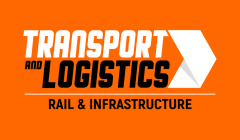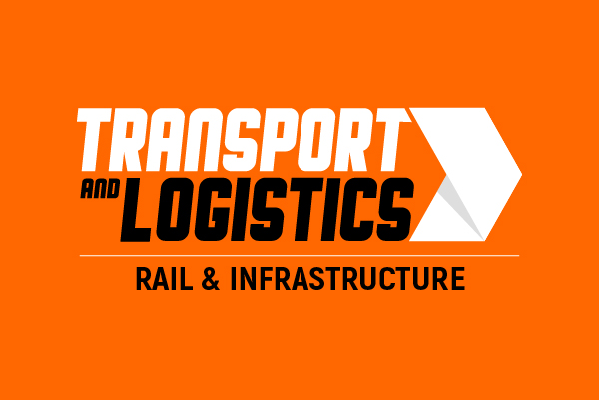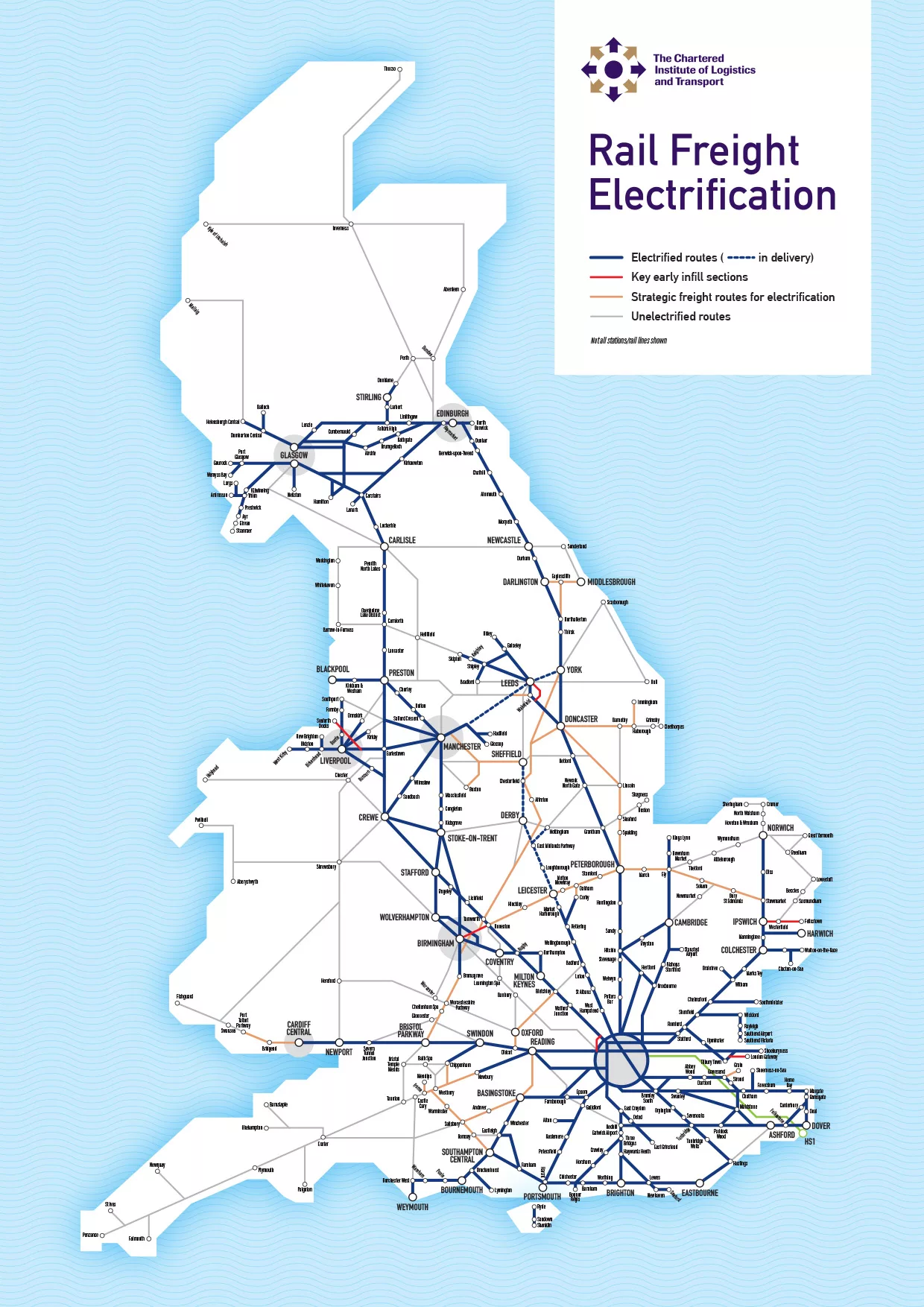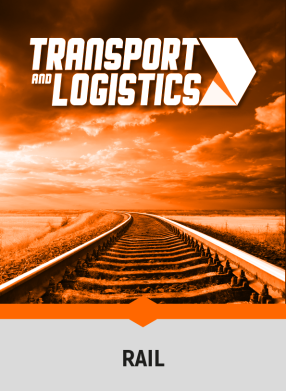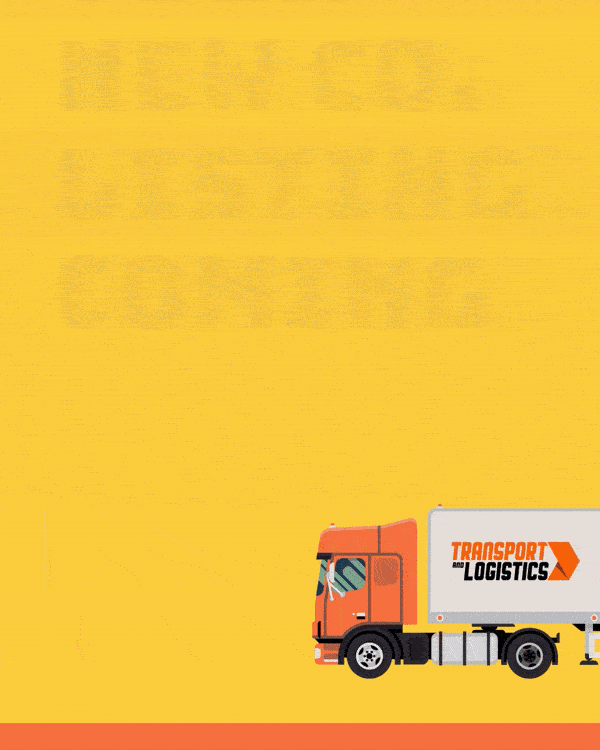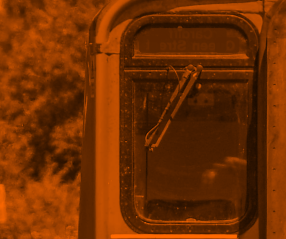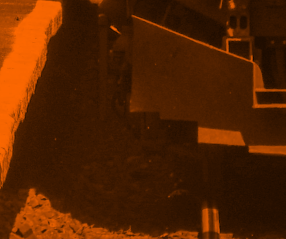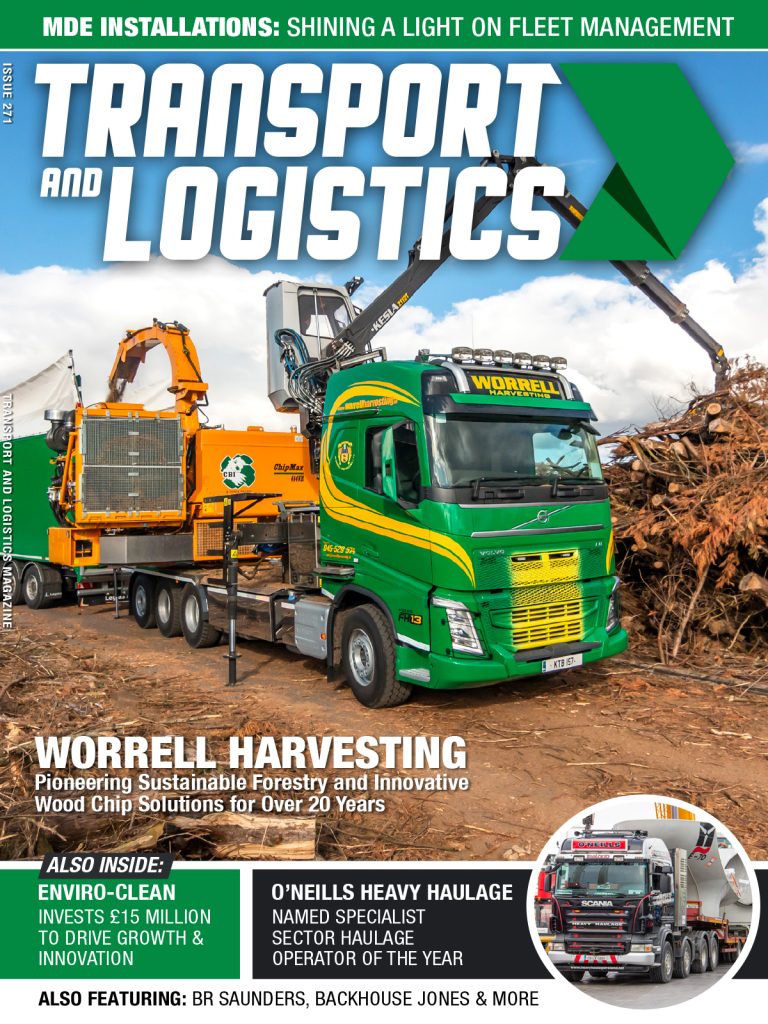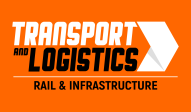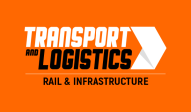The Chartered Institute of Logistics and Transport – CILT(UK) – has released its electrification strategy research which reveals the significant opportunity of electrification across the UK’s rail network.
CILT has released a detailed map and strategy which demonstrates and details the opportunity in the UK to electrify 95% of rail freight operations by the mid-2040s. The research reveals that only 800 miles of additional electrification is needed in the UK to enable 95% of rail freight to be electrically hauled. The initial 60 miles of Infill electrification is estimated to cost c.£50m p.a. over two years – less than the cost of one road scheme – and represent a ‘no regrets’ way of decarbonising key parts of the UK logistics system.
Currently, a mere 10% of British freight trains are hauled by electric locomotives and the UK lags behind its European counterparts when it comes to rail freight electrification.
Furthermore, CILT suggests an electrification programme of 40 route miles per annum for 20 years, at a cost of £100 million per annum, is required to deliver this significant opportunity for the UK to meet its decarbonation and net-zero goals.
While decarbonising technology for other modes of transport is still emerging, and therefore sometimes challenging to introduce, electrified rail transport is a fully mature, proven green technology which has been in use for more than 60 years. CILT sees this opportunity as ‘low-hanging fruit’ when it comes to decarbonisation and reducing emissions from transport operations.
Based on detailed analysis of data on rail freight movements across the UK, the routes proposed for electrification lead from main container ports to inland distribution centres, which are key supply chain hubs, and from major quarries to urban areas that require large quantities of construction materials. Also included are routes serving other key rail freight customers such as the steel industry.
The research also specifies three priority areas in its electrification strategy:
- Electrification of the key cross-country route from Felixstowe to the Midlands and North avoiding London (the ‘F2MN’ route). This provides a direct link to the West Coast Main Line at Nuneaton for the North West and Scotland and, along with the line from Peterborough via Lincoln to Doncaster, a direct link to Yorkshire and the North East. It would allow zero-carbon electric trains to be used in place of diesel trunk HGVs on the A14, M6, and A1.
- The next phase would electrify the link from Britain’s third largest container port at Southampton to inland markets. The first stage involves electrification from Basingstoke to Reading and from Didcot, via East West Rail, to Bletchley on the West Coast Main Line. A second stage would see the route from Southampton to Basingstoke via Andover being electrified. Diesel trunk HGVs on the A34, A43 and M40 could be replaced by zero-carbon electric rail services.
- The third phase of the CILT electrification strategy involves routes from major quarries and cement works in the Peak District and the Mendips. This would allow electric haulage of millions of tonnes a year of heavy construction materials to Manchester, Leeds, Birmingham and the South East. Roads such as the A6 and A38 in the Midlands and North, plus the A36, A303, M3 and M4 in the South, would be relieved of diesel HGVs.
Transport and Logistics Magazine | The Home of Transport Industry News
